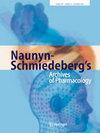摘要
牙周炎(PD)是一种复杂的口腔炎症性疾病,致病因素多种多样,需要有效的多靶点治疗方法。传统中药配方,如口腔溃疡方(KQJF),因其多种药理作用而具有替代疗法的潜力。本研究结合网络药理学、机器学习、孟德尔随机化(MR)和实验验证等方法,全面研究了口强绝方治疗帕金森病的关键活性成分和分子靶点。KQJF的活性成分和靶点通过TCMSP和HERB数据库确定,而与PD相关的基因则来自GeneCards、CTD和DisGeNET。来自 GEO 数据集的基因表达数据实现了差异表达分析。采用随机森林(RF)和支持向量机(SVM)等机器学习模型来评估基因组的诊断潜力。利用分子对接评估了活性成分与靶点之间的相互作用,并进行了MR分析以探索与PD的因果关系。利用大鼠模型进行了实验验证。结果表明,KQJF由193个活性化合物组成,靶向561个蛋白质,其中272个靶点与帕金森病有显著重叠。其中发现了叶黄素、亚麻酸和柚皮苷等关键化合物。SVM 模型具有出色的预测性能,AUC 为 0.954。MR分析显示,CASP3基因对罹患帕金森病的风险有明显的因果效应(OR = 1.595,p = 0.015)。实验结果表明,这些化合物可以降低 CASP3 的表达,改善牙周组织的完整性。总之,叶黄素、亚麻酸和柚皮苷是 KQJF 的核心化合物,而 CASP3 是一个重要的靶点。本研究强调了 KQJF 治疗 PD 的巨大潜力,并为开发新的治疗策略提供了坚实的数据基础。Periodontitis (PD) is a complex oral inflammatory disease with diverse pathogenic factors, demanding effective multi-target therapeutic approaches. Traditional Chinese Medicine (TCM) formulations, like the Kouqiangjie Formula (KQJF), hold potential as alternative therapies due to their multiple pharmacological effects. This study comprehensively investigated the key active ingredients and molecular targets of KQJF in treating PD through a combination of network pharmacology, machine learning, Mendelian randomization (MR), and experimental validation. The active components and targets of KQJF were identified via the TCMSP and HERB databases, while PD-related genes were sourced from GeneCards, CTD, and DisGeNET. Gene expression data from GEO datasets enabled differential expression analysis. Machine learning models, including Random Forest (RF) and Support Vector Machine (SVM), were employed to evaluate the diagnostic potential of gene sets. Molecular docking was utilized to assess the interactions between active ingredients and targets, and MR analysis was conducted to explore the causal relationships with PD. Experimental validation was carried out using a rat model. The results indicated that KQJF consists of 193 active compounds that target 561 proteins, with a significant overlap of 272 targets related to PD. Key compounds such as luteolin, linolenic acid, and naringenin were identified. The SVM model demonstrated excellent predictive performance, with an AUC of 0.954. MR analysis revealed a significant causal effect of the CASP3 gene on the risk of PD (OR = 1.595, p = 0.015). Experimental findings showed that these compounds could reduce the expression of CASP3 and improve the integrity of periodontal tissues. In conclusion, luteolin, linolenic acid, and naringenin are the core compounds in KQJF, and CASP3 is an important target. This study emphasizes the great potential of KQJF for PD treatment and provides a solid data base for the development of new therapeutic strategies.

 求助内容:
求助内容: 应助结果提醒方式:
应助结果提醒方式:


